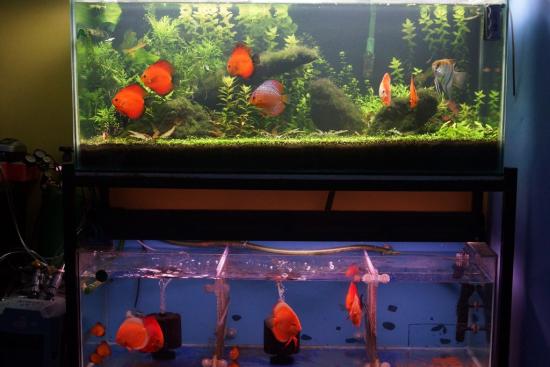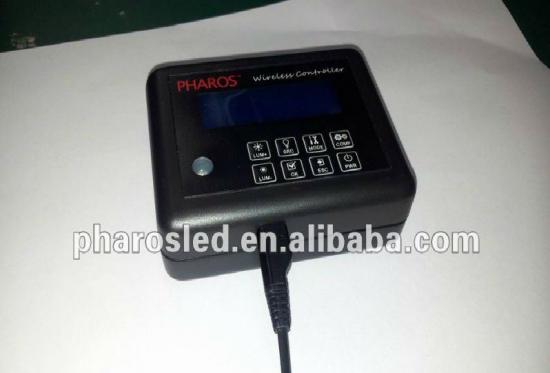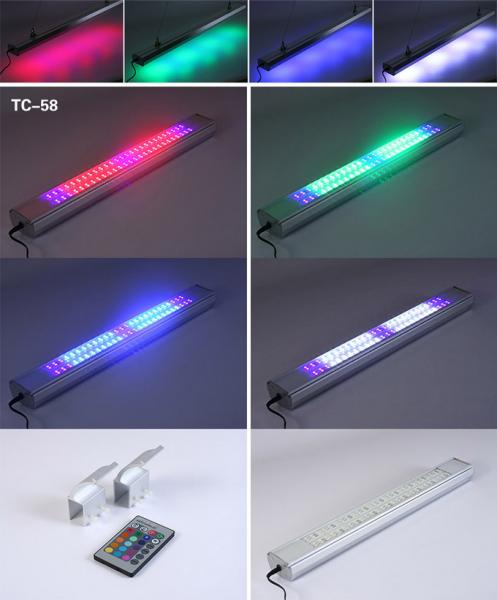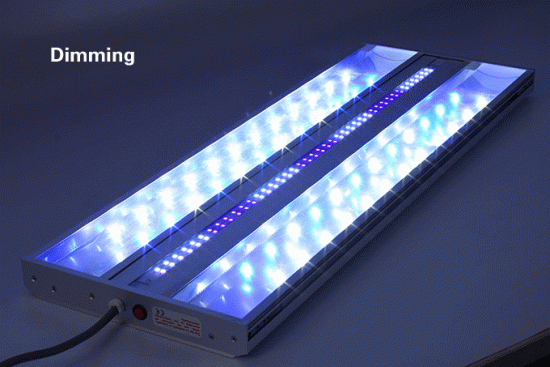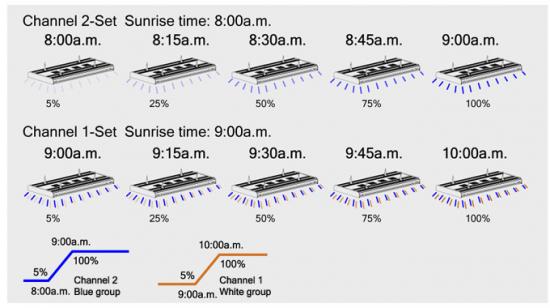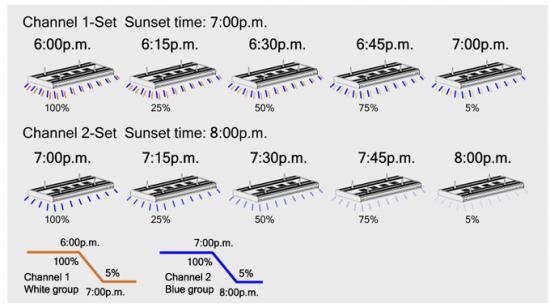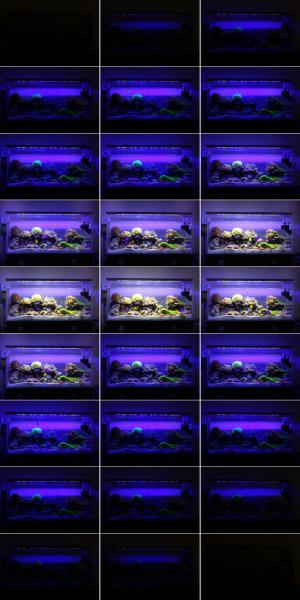-
Posts
616 -
Joined
-
Last visited
Content Type
Profiles
Forums
Gallery
Everything posted by clee123
-
I have my cleaner wrasse for more than 1.5 years now... don't have any special way to keep such fish just make sure you have enough fish (usually bigger than the cleaner) to keep it busy... One thing I have not been successful is to keep more than one cleaner wrasse in the tank...seem like they are not in the mood of sharing "fish patients"...
-
Bro Waime, I am interested to adopt your discus...the following are my tanks and potential mates for your discus...
-
You can check out my tank thread from the following links: or Good luck to your new found hobby...
-
There are both using the same ES2800 pump... for SK201, you pay extra for the Cone shape body which urguably more effecient in skimmage export... as to how much more efficient compared to SM161, my guesses would be around 8-10%... Btw, I think this might be an overkill for your 2 footer... they are designed for 500L-1200 litres tank...
-
Based on my understanding those products do not interface with profilux aquarium computer ...
-

noob question : how to reduce nitrates
clee123 replied to leonoet's topic in New to the Marine Aquaria Hobby
Yes...you can get a hanna checker... https://www.hannachecker.com/index.php?page=shop.browse&category_id=24&option=com_virtuemart&Itemid=29 -
Ozone is a highly dangerous gas (O3) and should be used with extreme caution as over application can literally strip the skin off your fish. It has the benefit of removing yellowness from water making it crystal clear, it will also kill pathogens in the water and will oxidise waste products causing the dissolved organic compunds to break down into simpler forms that can consumed by heterotphic bacteria or recobine into forms that can be removed with Protein skimmer.
-
I don't think this matter much... as bacteria from the pellets will be flown into your display tank be it from the sump or hanging on your tank... the important thing is to keep your pellets in the reactor in good circulation...
-
To solve your KH or CA/MG problem you can refer to the following link to identify your problem zone and adjust accordingly... http://www.advanceda...02/11/chemistry To obtain the correct dosage to bring your water chemistry (be it CA, Mg or KH), use the following Reef Chemistry Calculator to get the right amount...for different products... http://reef.diesyst..../flashcalc.html In your case of Seachem product ... there are two types of product pertaining to KH to solve your low KH problem... 1) Reef builder and 2) Reef buffer.. How to use?? My suggestion for you to bring up the KH.... 1) use Reef Builder with the calculated dosage to bring up the KH slowly (probably 3-4 days) to the desired value.. 2) once the desired KH value has been obtained use the Reef Buffer (with dosage calculated from the chemistry caculator) to maintain your KH and keep your PH in check... 3) monitor your water parameters closely and dose Reef buffer if needed until you got the stable KH... Then consider buying a CR or dosing pump.... Hope this will help you...
-
If you are planning to keep fish and corals (LPS/SPS) ... you will probably need to consider a CR (calcium reactor) and/or a FR (fluideised reactor) to keep your water parameters in stable condition...alternatively, a dosing pump might be an good option to consdier...
-
If you are referring to ZP2200 or ZP3200... then, I would think it is easier to control it from the LED system's control panel(with multi-level settings for simulation of sunrise/sunset/moonlight) rather than interface with profilux ... ?? The best is you check with the manufacturer for specific technical specs.. (Vivi Chen : sales015@zetlight.com)... Being said that, I would prefer a wireless control panel where your can control multiple light boxes like the following products: Wireless LED Light.pdf User Manual for Wireless LED Light.pdf
-
Wah lau.. Fantastic tank...
-
bro bluemask, Unfortunately, I got my DIY customed-build LED system two weeks before I got the chance to visit the Guangzhou Pets and Aquarium fair last year where I found the above mentioned LED system.. I was quite tempting to try out one set when I was there... but having invested much $$$$ on the 2 LemunAqua UltraBright and the DIY LED... I finally gave up the idea... However, I am able to simulate the similar function by using the buid-in timer from the three LED sets...
-
Usually that's what most of the LED manufacturers claim that a LED bulb can last 50000 - 70000 hrs which translates into 5-7 years.. Assuming a worst case of 3-4 years ... it's good enough for your to change to another newer lighting technology...who know?(OLED - Organic LED??) Furthermore, changing a LED bulb is cheaper than changing a MH bulb (and you don't have to change all at one short..)
-
:bow:
-
http://www.aquastyleonline.com/products/KEY-LED-K3-Bridgelux-version.html
-
For SPS specific LED, they usually use the same quatity of White and blue LED...(e.g. 32 x 3W White and 32 x 3W Blue)...
-
Another essential feature I think a new LED system should have is to equipped with necessary waveleghts and specturm of lights needed for a varitey of corals. As light requirements can sometimes vary greatly, even within different coral species but with the same genus. In addition, two species of corals do not grow at the same rate, when under the same photosynthetic wavelength of light. This is because each species requires a specific color wavelength (measured in nanometers) to obtain optimal color pigment of the corals tissue. There are some reefers converted their LED system back to MH or T5 as they find that LED lighting cannot bring out the colour of some of their SPS as compared to when they were using MH/T5. I would like to think that this might due to the fact that old LED covered only certain wavelenghs (White/Blue) required by certain corals but not all. So, a LED system with the auxiliary lights consist of red, green and blue color chips, alternating with purple (voilet) and blue beads can provide the greatest degree of spectrum for the LPS and SPS; With special controller of RGB, dozens of colors can be set and the true color of the fish, coral, and tank can be presented, which in my view, completely change the traditional lighting effect. For existing LED users, you might want to consider supplement the auxiliary lights with the followings: Alternatively, for those who are considering converting to LED system, a LED light set with auxiliary lights build in is a preferred option. For additional information on this cheaper LED alternative...you can following this link: http://sh-ne.com/eindex.asp
-
In my previous post, I mentioned that one of the key drivers for me to swithch to LED lighting is the flexibility for me to "fine tune" the intensity and colour temperture of the LED to meet the requirements for corals at differnt point of time.. This is very important as the quality of lights needed by the corals for photosynthesis is not always the same through out the day. As such, having a constant high PAR value is not necessary good for corals growth..The key is quality of light required NOT quantity of light.. So, a LED system with the added feature that can simulate the cycle of the sunrise (25000k), afternoon (8000k), sunset (25000k), and moonlight is essential. As compared to the earlier LED system, with only one non-adjustable intensity and single colour temperture, the new LED technology is also more effcient in power comsumption. This also translate to additional money saving.
-

Replacing my T5 to leds qns
clee123 replied to jerome9731's topic in SPS and Advanced Reefkeepers Forum
check out my thread : -
Take a look at my thread... If you ask my suggestion... get something similar to this http://pharosled.en.alibaba.com/product/506693856-213012186/130W_moonlight_cree_led_auqarium_light_with_dimmer.html It has most of the light specturms (wavelenght required for SPS/LPS) covered.. get one set first (for LPS) and when you are ready for SPS, get another one or two sets...this is just my two cents puting myself in your shoes..


